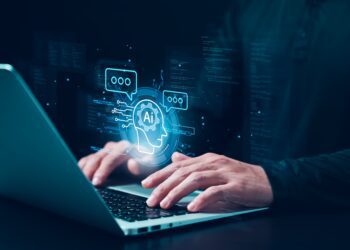We spoke with Pierre d’Imbleval, Chief Information Officer for Renault Sport Racing, on how data is changing the F1 competition.
As we hear the roaring engines pass along the track, it’s important to remember that not only the car and the driver are competing. Data and artificial intelligence (AI) also have their say in the majestic Formula 1 (F1) sport.


The Grand Prix has become a worldwide event capable of reaching wide audiences of all ages and economic status who wait anxiously to see who conquers the podium. However, behind the loud engines and fast cars, artificial intelligence, data, weather conditions and free-flowing information play a crucial part in achieving success.
On his visit to Mexico City as a part of the 2018 Grand Prix Event, Pierre d’Imbleval, Chief Information Officer for Renault Sport Formula One team, spoke about the importance of implementing new technologies and partnering up with corporations such as Microsoft to improve efficiency on the track.
“One of the main daily challenges for a Formula One team is to maintain the speed of development – from design and aerodynamics to the actual manufacture of the part to fit on the car in time for the next race”, d’Imbleval said.
“This requires a very high level of reliability and performance – both in terms of the IT hardware and software that Renault Sport Racing uses on a regular basis, and also in terms of the reliability of the company’s user community to ensure Renault Sport Racing can maximize its working time focusing on creativity, simulation and then 3D prototyping.”
The work of Renault and d’Imbleval really starts with the aerodynamics study.
“We start with the CATiA 3D product design solution from Dassault Systèmes to design the parts”, d’Imbleval explained. “We then use CFD (computational fluid dynamics) to run simulations before the parts are 3D prototyped and put into the wind tunnel. So, IT makes a big contribution to this very critical part of our design process. Each one of the Renault cars has around 200 sensors, and as soon as the car is on track, those sensors send data through thousands of channels. This way we know how the engine is performing, if the breaks are in good form, if the car vibrations acceleration force are right, and if our driver is feeling confident; the right calls could lead to victory,” he says.
“Wrong calls could spell failure, perhaps even disaster.”
From car racing to real life and everyday business
There has been a change in F1, a big one.
Data and new technologies have been proven to improve both efficiency and the infrastructure of a motor car to expect better results, so why not take these technologies further?
Imagine such innovations in construction, hard labor and human-risk conditions. Some companies are already doing it, as seizing digital opportunities to boost planification, programming, and hiring, to name just a few areas, simplifying and bettering specific areas of opportunity. That can be the difference between first and second place.
“There is still no way data can win the game by itself, but it has been key to share the strategy with everyone and making sure that everyone understands the message”, d’Imbleval insisted. “In the end, it’s all about how many seconds we can gain from an improvement or innovation. Every detail counts and progressive spending is very important in delivering what we want.”
“Technology has also moved the needle in design and development, and it is nice to have a partner in Microsoft that brings people together and responds to us with the specific plans and benefits and technologies that we can implement for the future on our search to win. That is why it’s so important to establish an alliance, in the end it’s a good thing for all.”
For example, from a disaster recovery standpoint, Pierre d’Imbleval recognizes that a supplier like Microsoft is able to invest all that is necessary to take care of the ERP infrastructure; allowing its own IT staff to focus on bringing more business value through the ERP solution to the user population instead of spending too much time on technical issues.
“We generate massive amounts of data each time the car runs on the track”, d’Imbleval said. “For this reason, the next major project for us is to gain greater benefit from all this data, and to use things such as machine learning to identify patterns and behaviors that are much easier to detect through Big Data than by simply relying on a human being. So, we want to use those technologies to explore new areas of performance for our team. For this to be realized, we need the right IT infrastructure and IT architecture that will make accessing the diversity of data sources much easier.”
An investment for the future
Although it may seem these technologies are already too high up the ladder, there is still a lot of room for improvement.
In the end, Formula One has become a careful mix of both risk mitigation regarding processes and advanced technology to bring improved performance to the car, so there have to be alliances to produce the necessary results.
Renault hopes technology innovations can pay off in the next years as they aim for podiums, however, it firmly believes 2019 and 2020 can be the years in which the France-based motor company can fight for the vital seconds it needs to take home the championship.
“Formula One is a world that generates an impressive level of creativity and willingness to explore new ways of improving car performance,” reflected d’Imbleval. “But at the same time, from a process standpoint, we want to mitigate the risk of too much innovation. So, from a process standpoint we would like to carefully explore new things, while from a technological standpoint we are keen to explore innovative areas”
Anyone missing those warm summer days? We can't change the weather, but we can share this video of @JaitkenRacer showcasing the Renault-powered E20 in the sunny streets of Miami. Enjoy! 🍩#RSspirit pic.twitter.com/5uliwTE4X3
— BWT Alpine F1 Team (@AlpineF1Team) December 17, 2018












